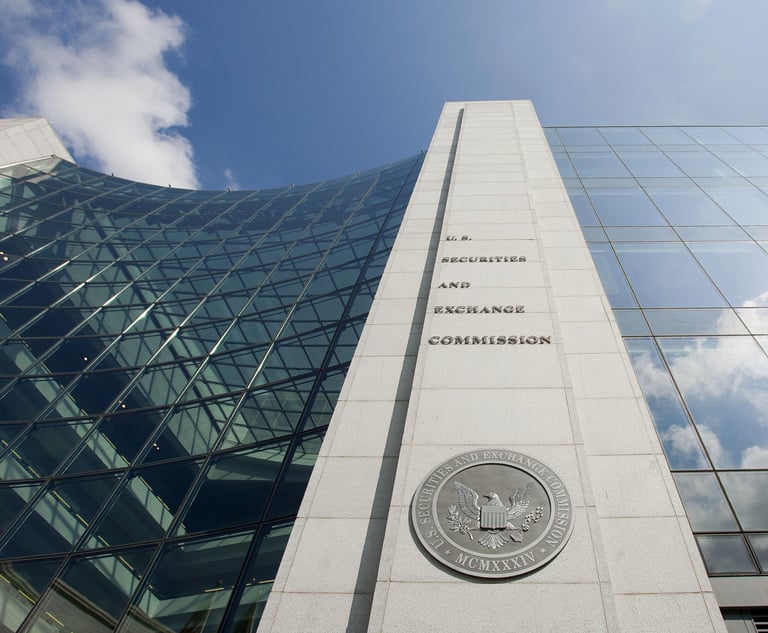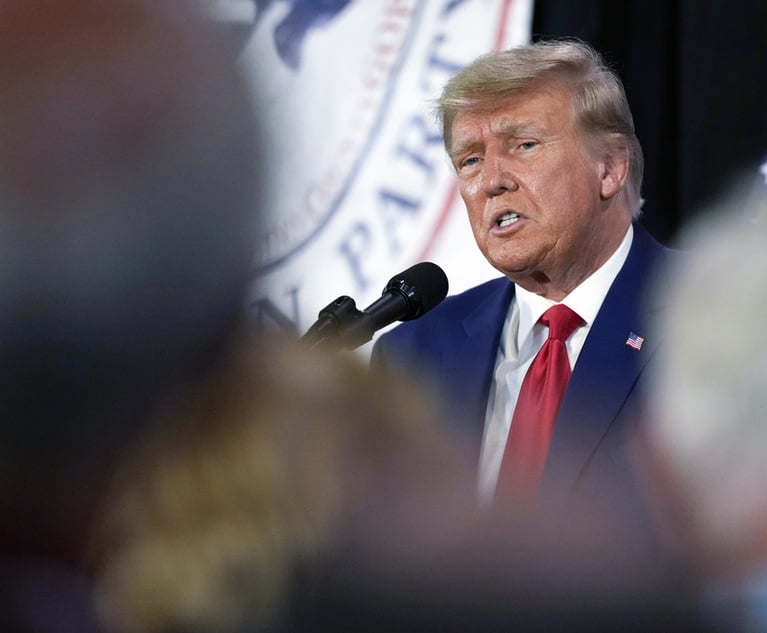Obama Announces Path to Tougher Auto Standards
President Obama on Monday signed two presidential directives aimed at making automobiles cleaner and more efficient.
January 25, 2009 at 07:00 PM
2 minute read
The original version of this story was published on Law.com
In what he called an important step toward energy independence, President Obama on Monday signed two presidential directives aimed at making automobiles cleaner and more efficient. Obama directed the Environmental Protection Agency (EPA) to revisit its denial of a waiver request by California, which would allow the state–and at least 13 others that have signed on to follow its lead–to set vehicle emissions standards higher than the national standard.
The Bush administration's EPA, headed by administrator Stephen Johnson, had previously denied the request–the first such denial of a California waiver. (For 2008 coverage, see “California Clash“).
Also on Monday, Obama announced he would direct the Department of Transportation to begin drafting auto fuel economy standards for a March release, ensuring that they will be in place for 2011. The standards require that, starting in 2011, new cars sold in the U.S. have an average fuel efficiency of 35 miles per gallon, up from the current 27.5 mpg.
Both actions will have broad effects on automakers trying to comply with the new regulations while already struggling with their own finances. Following the White House announcement, some expressed concern over the potential impact. “I am fearful that today's action will begin the process of setting the American auto industry back even further,” Sen. George Voinovich (R-Ohio) said in a statement.
Other politicians and environmental groups praised Obama's actions, which are seen as an assurance that the new administration's attitude toward environmental policy will not reflect the Bush administration, which many saw as marked by inaction.
“In more ways than the environment, this is a breath of fresh air,” Sen. Patrick Leahy (D-Vt.) said in a statement. “This also makes clear that we once again have a White House and an EPA that value science and the way science and engineering can help solve some of the nation's most difficult challenges.”
Obama said that the steps toward fuel independence are important for the country's security and economy, emphasizing a view to the future. “Our goal is not to further burden an already struggling industry, it is to help America's automakers prepare for the future,” he said. “We must ensure that the fuel efficient cars of tomorrow are built right here.”
This content has been archived. It is available through our partners, LexisNexis® and Bloomberg Law.
To view this content, please continue to their sites.
Not a Lexis Subscriber?
Subscribe Now
Not a Bloomberg Law Subscriber?
Subscribe Now
NOT FOR REPRINT
© 2024 ALM Global, LLC, All Rights Reserved. Request academic re-use from www.copyright.com. All other uses, submit a request to [email protected]. For more information visit Asset & Logo Licensing.
You Might Like
View All
SEC Penalizes Wells Fargo, LPL Financial $900,000 Each for Inaccurate Trading Data

US Reviewer of Foreign Transactions Sees More Political, Policy Influence, Say Observers

Pre-Internet High Court Ruling Hobbling Efforts to Keep Tech Giants from Using Below-Cost Pricing to Bury Rivals
6 minute read
Preparing for 2025: Anticipated Policy Changes Affecting U.S. Businesses Under the Trump Administration
Trending Stories
- 1Decision of the Day: Judge Reduces $287M Jury Verdict Against Harley-Davidson in Wrongful Death Suit
- 2Kirkland to Covington: 2024's International Chart Toppers and Award Winners
- 3Decision of the Day: Judge Denies Summary Judgment Motions in Suit by Runner Injured in Brooklyn Bridge Park
- 4KISS, Profit Motive and Foreign Currency Contracts
- 512 Days of … Web Analytics
Who Got The Work
Michael G. Bongiorno, Andrew Scott Dulberg and Elizabeth E. Driscoll from Wilmer Cutler Pickering Hale and Dorr have stepped in to represent Symbotic Inc., an A.I.-enabled technology platform that focuses on increasing supply chain efficiency, and other defendants in a pending shareholder derivative lawsuit. The case, filed Oct. 2 in Massachusetts District Court by the Brown Law Firm on behalf of Stephen Austen, accuses certain officers and directors of misleading investors in regard to Symbotic's potential for margin growth by failing to disclose that the company was not equipped to timely deploy its systems or manage expenses through project delays. The case, assigned to U.S. District Judge Nathaniel M. Gorton, is 1:24-cv-12522, Austen v. Cohen et al.
Who Got The Work
Edmund Polubinski and Marie Killmond of Davis Polk & Wardwell have entered appearances for data platform software development company MongoDB and other defendants in a pending shareholder derivative lawsuit. The action, filed Oct. 7 in New York Southern District Court by the Brown Law Firm, accuses the company's directors and/or officers of falsely expressing confidence in the company’s restructuring of its sales incentive plan and downplaying the severity of decreases in its upfront commitments. The case is 1:24-cv-07594, Roy v. Ittycheria et al.
Who Got The Work
Amy O. Bruchs and Kurt F. Ellison of Michael Best & Friedrich have entered appearances for Epic Systems Corp. in a pending employment discrimination lawsuit. The suit was filed Sept. 7 in Wisconsin Western District Court by Levine Eisberner LLC and Siri & Glimstad on behalf of a project manager who claims that he was wrongfully terminated after applying for a religious exemption to the defendant's COVID-19 vaccine mandate. The case, assigned to U.S. Magistrate Judge Anita Marie Boor, is 3:24-cv-00630, Secker, Nathan v. Epic Systems Corporation.
Who Got The Work
David X. Sullivan, Thomas J. Finn and Gregory A. Hall from McCarter & English have entered appearances for Sunrun Installation Services in a pending civil rights lawsuit. The complaint was filed Sept. 4 in Connecticut District Court by attorney Robert M. Berke on behalf of former employee George Edward Steins, who was arrested and charged with employing an unregistered home improvement salesperson. The complaint alleges that had Sunrun informed the Connecticut Department of Consumer Protection that the plaintiff's employment had ended in 2017 and that he no longer held Sunrun's home improvement contractor license, he would not have been hit with charges, which were dismissed in May 2024. The case, assigned to U.S. District Judge Jeffrey A. Meyer, is 3:24-cv-01423, Steins v. Sunrun, Inc. et al.
Who Got The Work
Greenberg Traurig shareholder Joshua L. Raskin has entered an appearance for boohoo.com UK Ltd. in a pending patent infringement lawsuit. The suit, filed Sept. 3 in Texas Eastern District Court by Rozier Hardt McDonough on behalf of Alto Dynamics, asserts five patents related to an online shopping platform. The case, assigned to U.S. District Judge Rodney Gilstrap, is 2:24-cv-00719, Alto Dynamics, LLC v. boohoo.com UK Limited.
Featured Firms
Law Offices of Gary Martin Hays & Associates, P.C.
(470) 294-1674
Law Offices of Mark E. Salomone
(857) 444-6468
Smith & Hassler
(713) 739-1250






